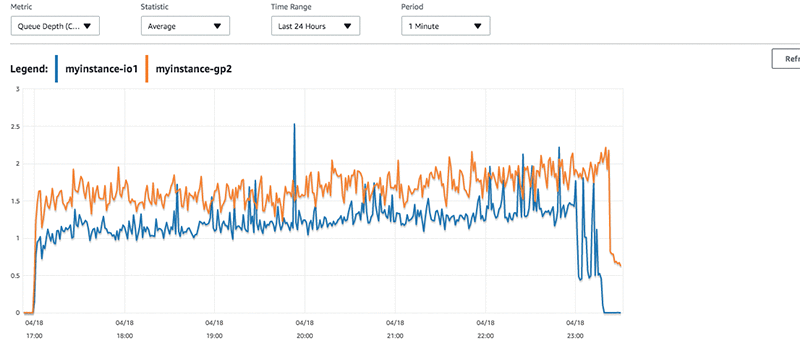AWS Database Blog
Category: Management Tools
Scheduling and running Amazon RDS jobs with AWS Batch and Amazon CloudWatch rules
Database administrators and developers traditionally schedule scripts to run against databases using the system cron on the host where the database is running. As a managed database service, Amazon Relational Database Service (RDS) does not provide access to the underlying infrastructure, so if you migrate such workloads from on premises, you must move these jobs. […]
Making better decisions about Amazon RDS with Amazon CloudWatch metrics
If you are using Amazon Relational Database Service (RDS), you may wonder about how to determine the best time to modify instance configurations. This may include determining configurations such as instance class, storage size, or storage type. Amazon RDS supports various database engines, including MySQL, PostgreSQL, SQL Server, Oracle, and Amazon Aurora. Amazon CloudWatch can […]
Building an AWS CloudFormation custom resource to manage Amazon RDS point-in-time recovery
Amazon RDS makes it easy to set up, operate, and scale a relational database in the cloud. It provides cost-efficient and resizable capacity while automating time-consuming administration tasks such as hardware provisioning, database setup, patching, and backups. It frees you to focus on your business logic and application features, leaving the heavy lifting to AWS. […]
Automate AWS CloudFormation template creation for AWS DMS tasks
Expanding on the earlier post, Create AWS CloudFormation templates for AWS DMS tasks using Microsoft Excel, this post highlights an enhanced feature of the same tool that can speed database migration. To demonstrate this feature, we present a small command line tool written in Python. The tool takes a CSV file containing the names of […]
Manage databases through custom skills with Amazon Alexa and AWS Systems Manager
Over the years, customers have used Amazon Alexa voice commands to order supplies, listen to music, support meetings, manage home devices, and get weather and news updates. But what about AWS resource management? AWS managed and fully managed services already reduces your administrative tasks, letting you focus your resources on applications. Now, voice interaction can […]
Deliver Amazon RDS Performance Insights counter metrics to a third-party Application Performance Monitoring service provider using Amazon CloudWatch Metrics Stream
This blog post was last reviewed or updated May, 2023. The updated version shown below is based on working backwards from a customer need to use RDS Performance Insights metrics in their APM tool for database observability. Amazon RDS Performance Insights is a feature that monitors Amazon Relational Database Service (Amazon RDS) database instances so […]
Monitor your Microsoft SQL Server using custom metrics with Amazon CloudWatch and AWS Systems Manager
In this blog post, we show you how to configure the CloudWatch agent on Amazon EC2 Windows instances to capture custom metrics for SQL Server from Windows performance monitor. We also show you how to publish those custom metrics and monitor them on Amazon CloudWatch console. We also walk you through on how to store custom configuration in AWS Systems Manager Parameter Store used by CloudWatch agent to capture those metrics and reuse the same configuration across multiple fleets of SQL Server instances where similar kind of metrics are needed.
How to use CloudWatch metrics to decide between General Purpose or Provisioned IOPS for your RDS database
July 2023: This post was reviewed for accuracy. In this blog post, I talk about how you can use Amazon CloudWatch metrics to understand when you might benefit from provisioned IOPS, also known as IO1 volumes, for highest performance mission-critical database workloads. I start by setting up a test case that simulates a nonbursting consistent […]
Set alarms on Performance Insights metrics using Amazon CloudWatch
Amazon RDS Performance Insights recently released a feature that sends key performance metrics from Performance Insights to Amazon CloudWatch. Using this feature, you can set alerts on these metrics. When Performance Insights is enabled, it automatically sends the following three metrics to CloudWatch: DBLoad DBLoadCPU DBLoadNonCPU I describe these three metrics following. DBLoad The first […]
How to use AWS CloudFormation to configure auto scaling for Amazon DynamoDB tables and indexes
A best practice for the deployment of AWS resources is to use a configuration system that treats your infrastructure as code. Infrastructure as code is a key enabler of DevOps practices, which bring developers and operations together to collaborate on automating application delivery at scale. By modeling your entire infrastructure as code in AWS CloudFormation […]









